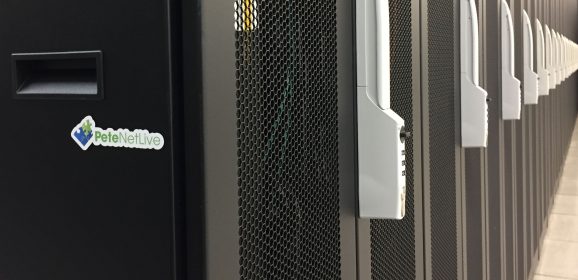Brocade Switches Getting the Serial Number
KB ID 0001665 Problem If you have fiber channel switches, (regardless of the vendor,) scratch the surface and underneath it’s probably a Brocade. (Unless it’s a Cisco Nexus then you are in the wrong place my friend, move along!) e.g an HP StorageWorks 8/8 SAN Switch (Yeah it’s a Brocade 6505), or an IBM SAN24B-4 Express Fabric Switch (you guessed it, Brocade). If you need to get the serial number for them,...
Aruba / HP Switches Clear Interface Counters
KB ID 0001519 Problem I was looking for a way to clear (zero) ALL interface counters, (in my case on a 5412-Zl2). Petes-HP-Switch# show int A1 Status and Counters – Port Counters for port A1 Name : Trunk Uplink Member 1 MAC Address : f40343-787aaa Link Status : Up Port Enabled : Yes Totals (Since boot or last clear) : Bytes Rx : 3,243,414,990 Bytes Tx : 4,155,683,352 Unicast Rx : 1,729,923,935 Unicast Tx : 3,184,593,493...
HPe Synergy 12000 MPIO QSFP to 10GB SFP Setup
KB ID 0001495 Problem I was recently involved in deploying an HPe Synergy 12000 Frame. And the network connections from it were ‘a little unusual’ so I thought I’d document that here, to save anyone else the problems I had. I was connecting to an HP/Aruba 5412 switch so my cables were all HP/Aruba (to be on the safe side). What you can see (above) is the MPIO Cable (K2Q46A P/N 800867-001) fixed onto the left (and...
Stacking (VSF) Aruba Switches
KB ID 0001492 I noticed some shiny Aruba switches on the bench today, they were for a job my colleague is working on. (Note: Each switch in a stack should be the same model, so these will need two stacks!) I work on the occasional HP/Aruba core switch, but it’s been a while since I did any work on distribution switches like these. The first thing I learned, was there’s no dedicated stacking cable for them. They simply use...
HP Switches – Find ‘Uptime’
KB ID 0001299 Problem Nice short and sweet article, you have an HP Switch, and you want to know how long it’s been online. Solution Execute the following command; show system-information Note: On newer versions of the OS, the command may omit the hyphen i.e. show system information Related Articles, References, Credits, or External Links...
HP – Switches The IP (or subnet) Already Exists
KB ID 0001176 Problem I was changing a clients LAN subnet this week, (dropping the mask from /24 to /16). When I attempted to change the management IP on the clients HP switches this happened; HP2510-24G(config)# vlan 1 HP2510-24G(vlan-1)# ip address 10.0.0.250 255.255.0.0 The IP address (or subnet) 10.0.0.250/16 already exists. HP2510-24G(vlan-1)# At first I though the switch was complaining because the IP was remaining the same, I...
HP Networking – Tracing Networks and Locating IP addresses
KB ID 0001110 After not touching one for a couple of years, I was back on HP switches recently, and I had to map out a clients switches. Now I could have used some software, but they didn’t have SNMP enabled so, I had to ‘re acquaint’ myself with LLDP. For a basic LLDP View of attached devices. HP-Switch-1# show lldp info remote-device LLDP Remote Devices Information LocalPort | ChassisId PortId PortDescr SysName...
HP Networking ‘ProCurve’ – Trunking / Aggregating Ports
KB ID 0000638 Problem I was lending a hand this week, while my colleague swapped out a lot of switches. I don’t usually deploy a large number of HP switches, so I was surprised when we installed a chassis switch and after patching the fiber links, the Cisco Catalyst switches all got upset and we lost three out of four ping packets. I (wrongly) assumed that STP would be enabled, so I wandered back and pulled the second fiber...
HP Procurve Adding a Management IP
KB ID 0000428 Problem You have an HP Procurve switch, and you would like to add a management IP so you can view the web console. Solution Related Articles, References, Credits, or External Links HP Procurve – Trunking / Aggregating Ports
HP 1810-8G Switch – Setup and Management
KB ID 0000732 Problem For such a ‘baby’ switch this has a LOT of features, I had to lock down the speed and duplex settings on one of the switch ports today. The main details you will be looking for are, Default IP address = 192.168.2.10 Default Password = blank Solution 1. Put yourself on the same network: Windows Key+R > ncpa.cpl {enter} > Right click your network connection > Properties > Internet...






